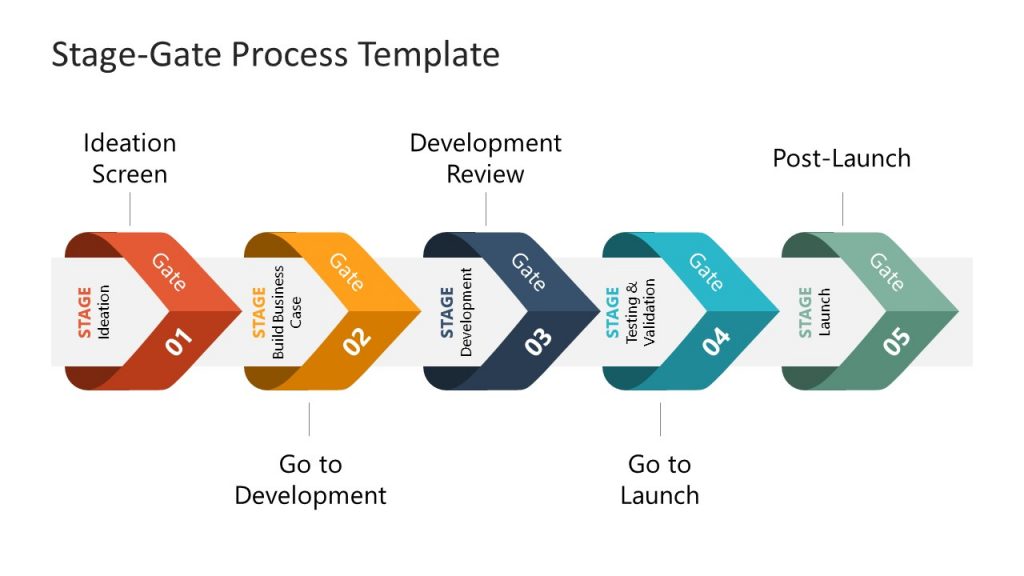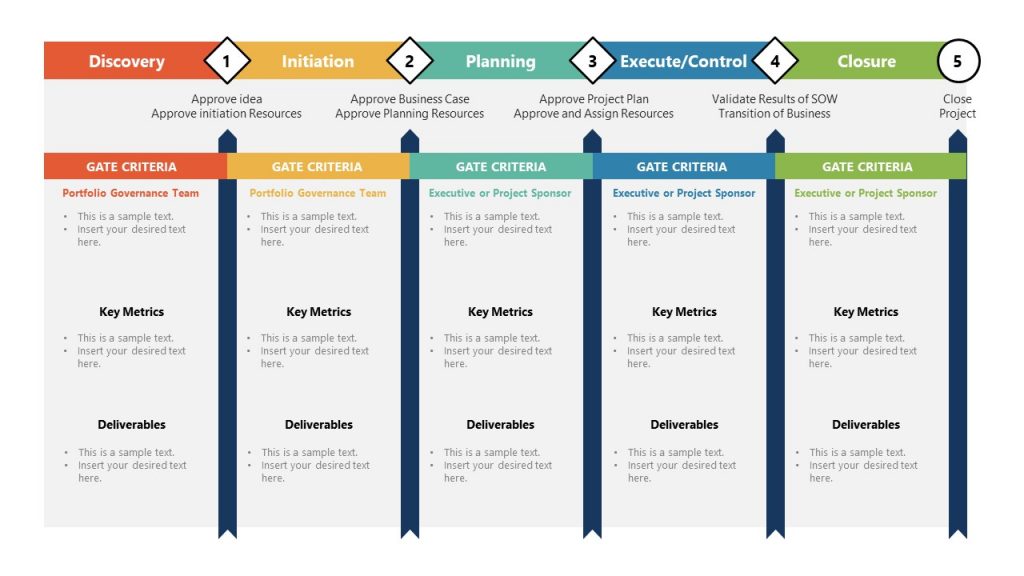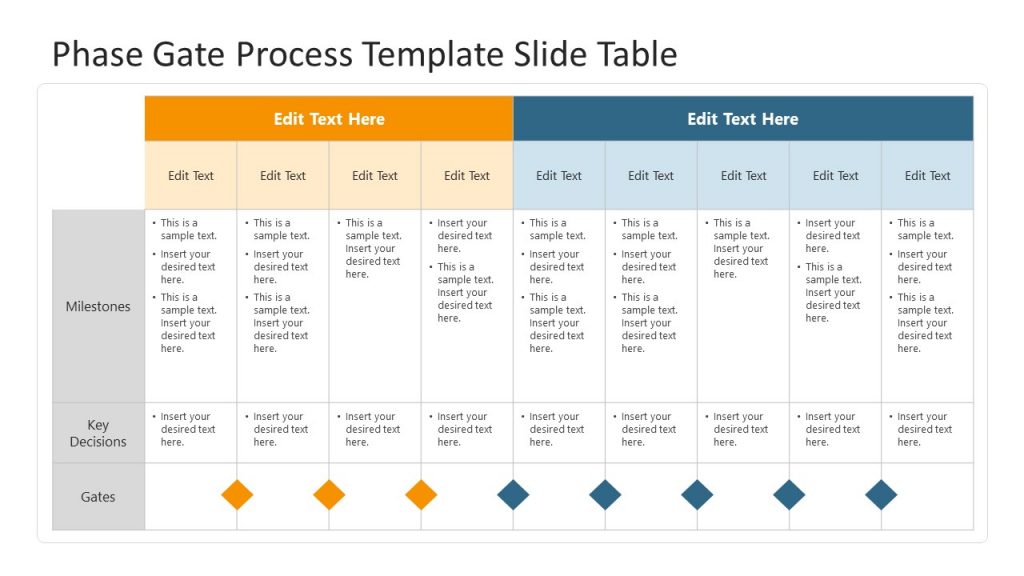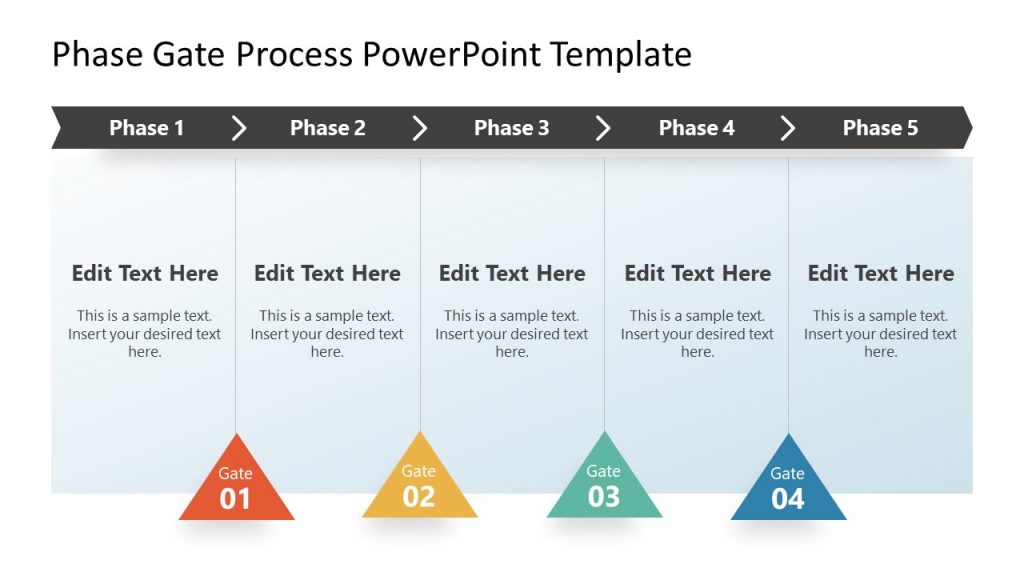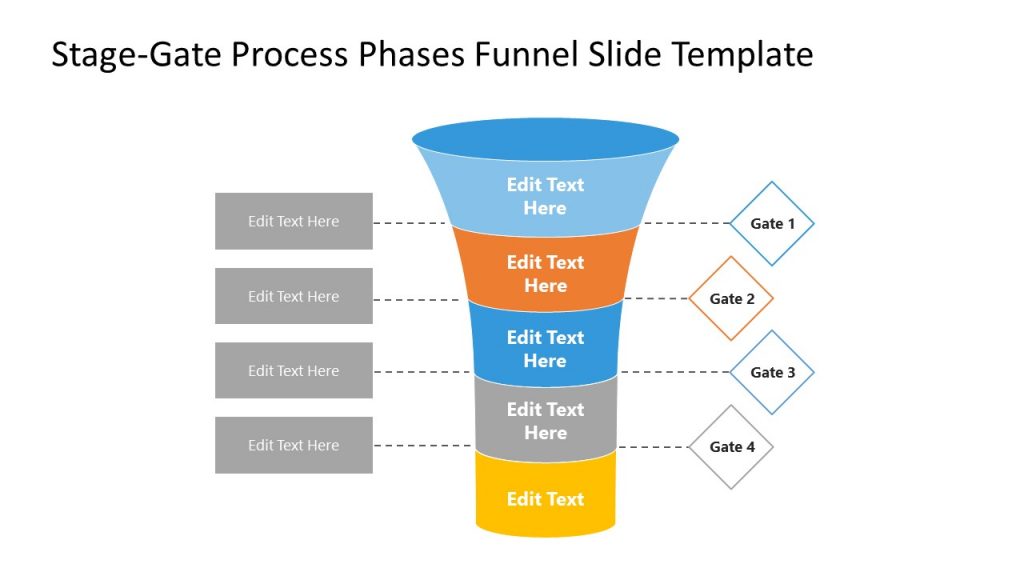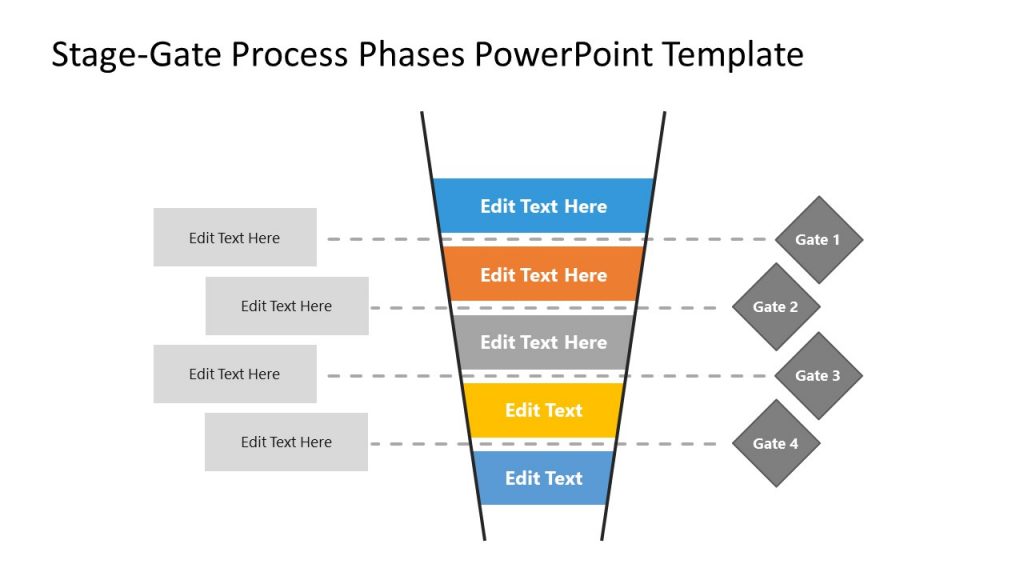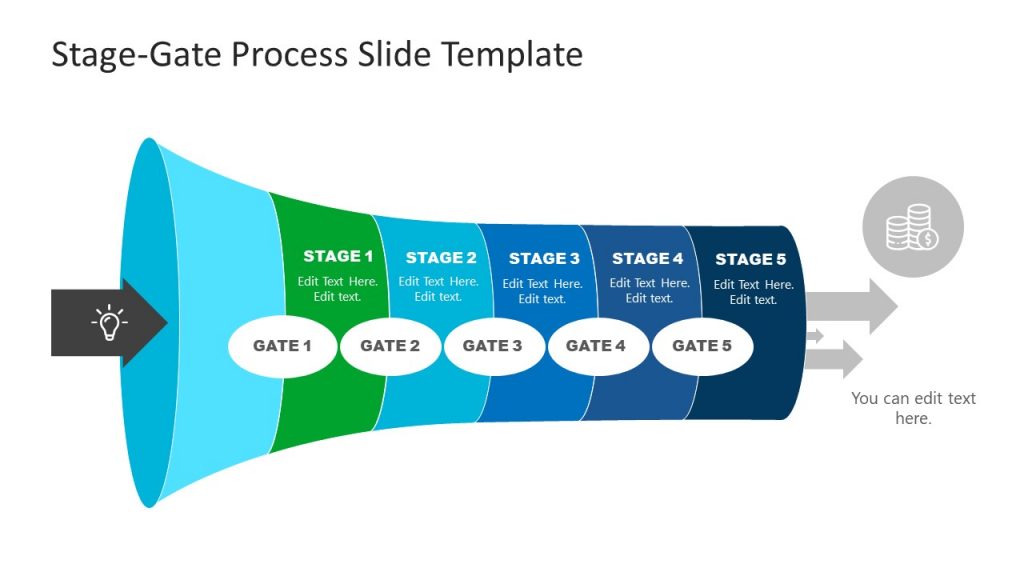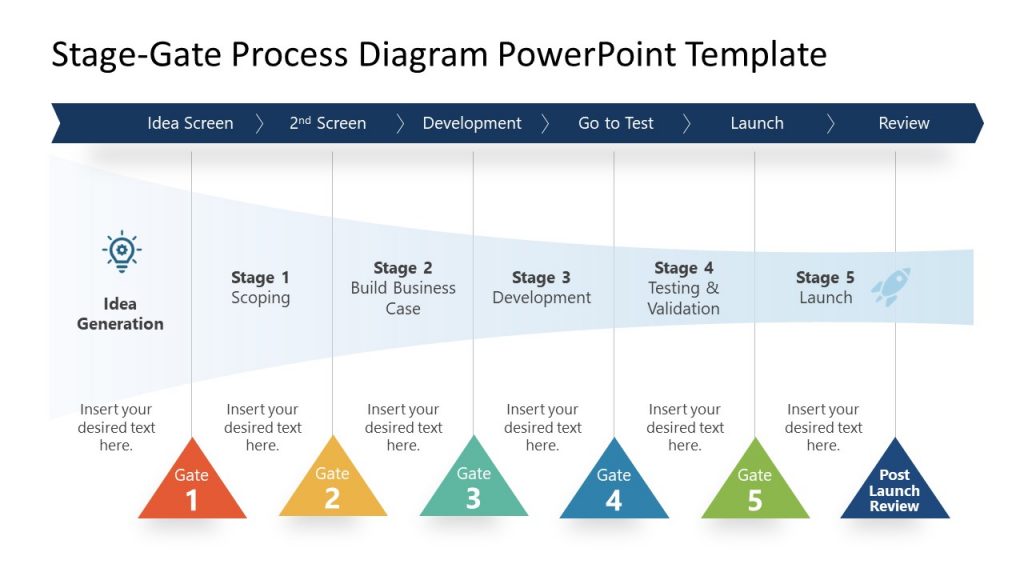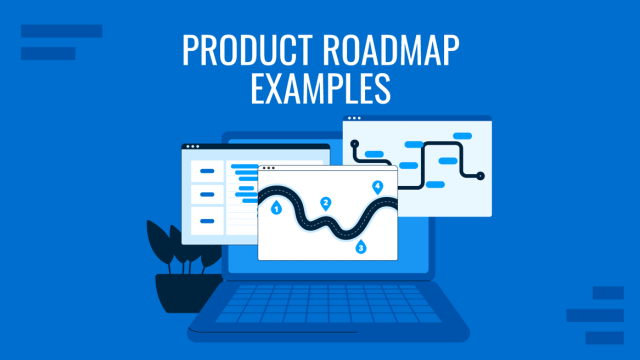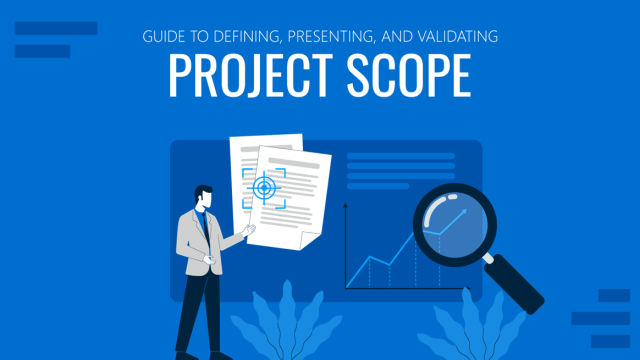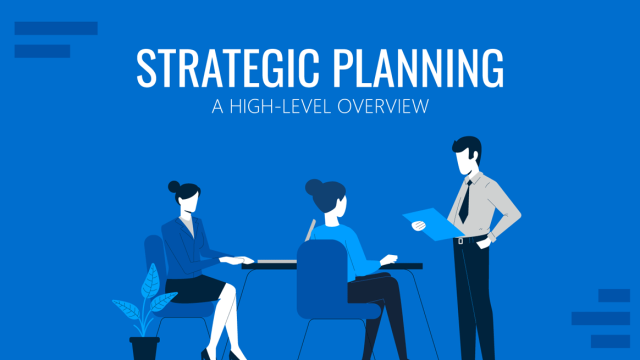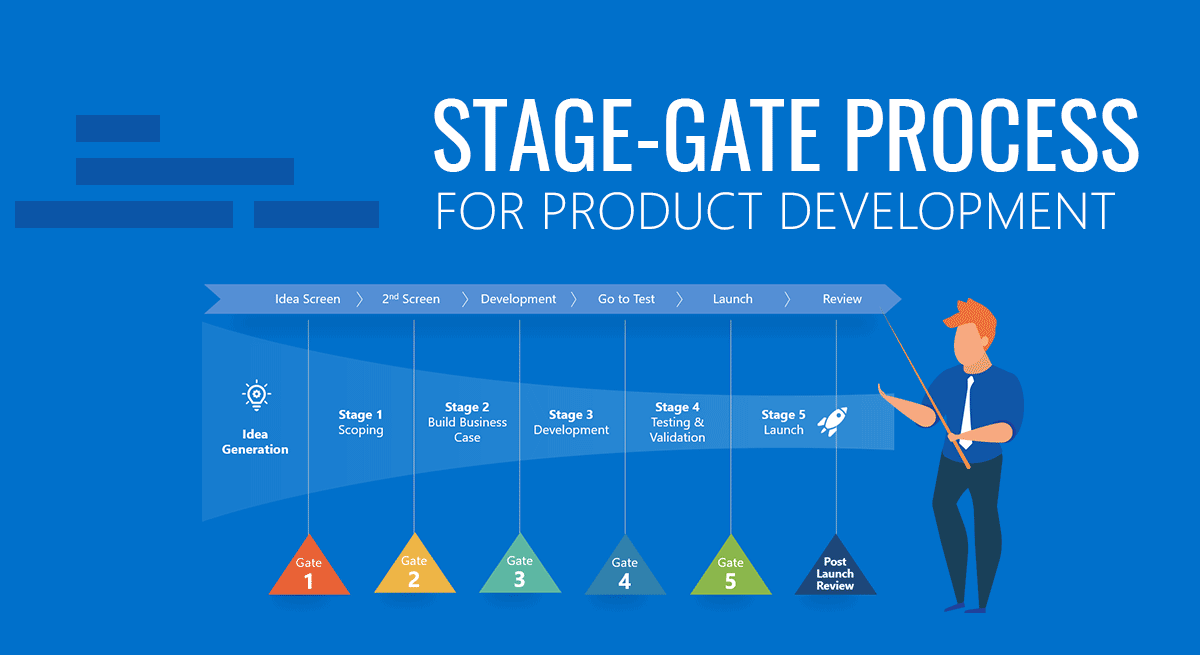
Many ideas might be explored during product development, product improvement, and process improvement to proceed with the most suitable option. Project managers need to carefully analyze the feasibility of the concepts and ideas before them and choose the ones that appear to be the most viable. The Stage-Gate Process provides project managers with the necessary tools to scrutinize ideas for viability before making it to the development stage.
Table of Content
- What is the Stage Gate Process?
- What Steps are Involved in the Stage Gate Process?
- Advantages and Disadvantages of Stage Gate Product Development
- Tips for improving Stage-Gate processes
- How to Present a Stage Gate Process?
- Case Studies: Successful Implementation of the Stage-Gate Process
- Final Conclusions
What is the Stage Gate Process?
The Stage Gate Process, also known as the Phase Gate Process, is a technique used by project managers to assess the viability of developing a new product and improving a process or business change. It is a phased approach by which is divided into different gates or decision points to analyze the business case, resources, risks, and forecast to determine the best course of action. It is important to know What a Phase Gate Process is, as each gate’s different stages include decision makers, such as managers, board members, or a steering committee.
What Steps are Involved in the Stage Gate Process?
The name Stage-Gate© or Phase-Gate explains the way the technique works. It is a combination of different steps, where the ideas have to go through various hoops for assessment, known as gates. Let’s take a closer look at the entire process the Stage Gate Process provides and how it benefits project managers and decision-makers to find the best possible option to proceed forward.
Stage Gate Process: The Traditional Phase Gate Process
The traditional Stage-Gate Process or Phase Gate Process has five basic steps after the discovery or the ideation process is completed. These include scoping, building a business case, development, testing, and validation, followed by launch.
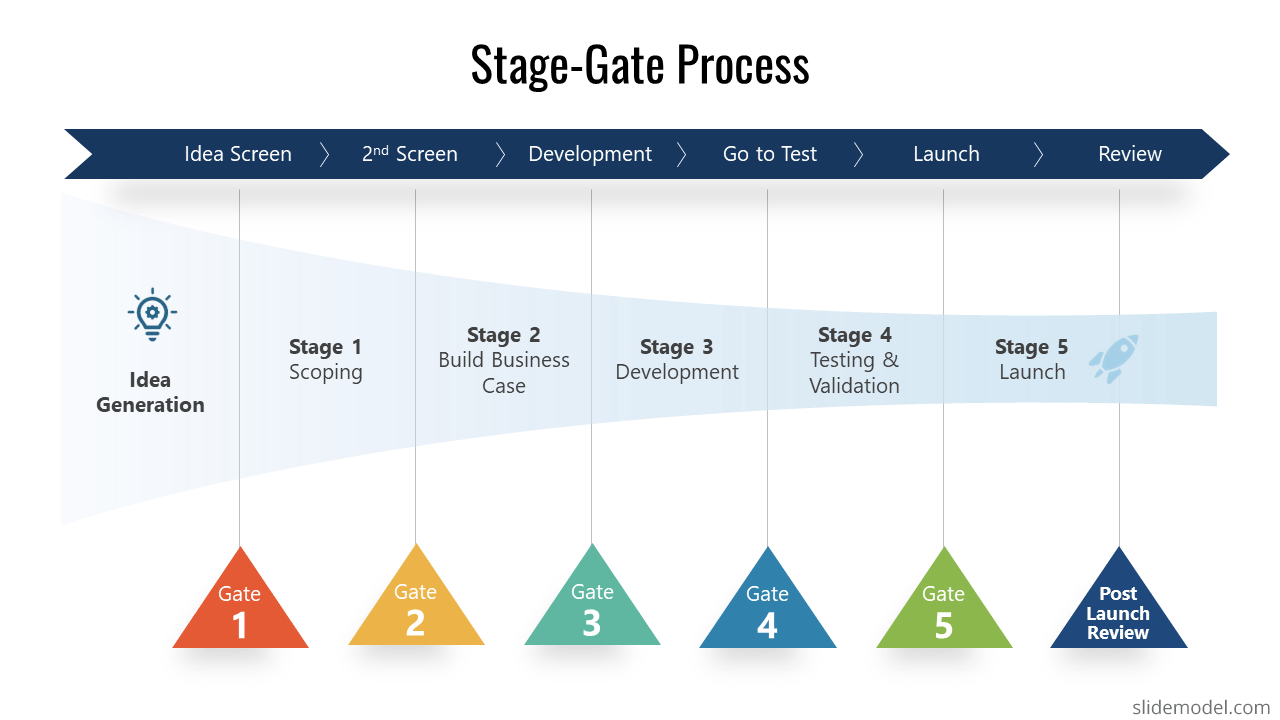
Idea Generation — Discovery (Ideation)
The discovery or ideation process involves finding an idea to pursue. This step is also known as the Idea Generation phase. This can include various stages based on the methods a company might employ in search of new ideas and improved processes to implement. There might be inter-departmental brainstorming, market research, feedback from customers, suppliers, product teams, etc. In some projects, it is as well worth considering offshore development center model for making cost-efficient business decisions.
Scoping
Scoping is the first phase of the Stage-Gate Process, where the viability of the product is analyzed based on various factors. These might include demand for the product in the market, threats from competitors, market and economic conditions, the strengths and weaknesses of the product, etc. This might be the right time for companies to resort to tools like SWOT or PESTEL analysis.
Build Business Case and Plan
Once the product passes through the first step, it’s time to build a business case, project plan, and feasibility review. This is the last phase of concept development, as the following stages include development, testing, and launch. This phase is further divided into four steps since this is a complex phase that requires carefully considering all aspects of the initiative to avoid any pitfalls later. These four phases include product definition and analysis, followed by the development of the business case and project plan, and finally, the feasibility review.
Development
The development phase of the Stage-Gate Process uses the plans from the preceding steps to execute the plan that has already been fleshed out. Since it has been determined till this phase that the product is viable, has been defined and analyzed, the business case and plan have been completed and deemed feasible for development.
The development stage might include some initial design and development, tests, and eventually a prototype. The marketing plans are also set to proceed and must align with the goals already defined for the initiative. The project timeline is reviewed during development to ensure the project is on track. Before the next phase, a prototype will already be prepared and ready for extensive testing.
Testing and Validation
This phase of the Stage-Gate Process validates the product. The product itself is evaluated and the processes involved, customer acceptance, and financial aspects tied to the project. The testing phase requires near, field, and market testing. To emphasize the importance of this phase, we can take the example of Microsoft, which laid off its almost entire testing team for Windows, as was revealed by former employee Jerry Berg. The change in the testing process resulted in significant bugs in Windows 10 that have haunted Microsoft since the product’s launch. This can be a significant failure in the testing and validation process.
Launch
After passing through all the principal gates, the product is launched. The product developer must have a marketing strategy to garner customer interest and attract demand for the product. The launch also requires several other careful considerations, including the volume to be produced in anticipation of the demand for the product, modes of delivery, resolution of customer complaints, etc.
It’s pretty standard for software development companies to anticipate bugs and roll out fixes after receiving customer feedback and complaints regarding software issues. Many operating system developers often prioritize support for enterprise users compared to common users. In contrast, hotfixes are often quickly rolled out, particularly after significant bugs are identified for a product launch. A few years ago, this might not have been as critical as it is now, due to various hardware and software variables to consider when launching a product as big as an operating system. All major OS developers such as Apple and Microsoft have been criticized in recent years for their inability to cope with bugs faced by users shortly after a product launch, from the harrowing ordeals Windows 10 customers had to face to the dysfunctional Apple maps.
Gates: Assessment of the Quality of an Idea
A closer look at gates during a Stage Gate Process includes various points, elements, and possible results. The assessment of the quality of an idea includes assessing different points.
Quality of execution
The quality of execution in a Phase Gate Process checks the quality of the execution of the previous step.
Business Rationale
The business rationale is the assessment of the viability of the project. To determine whether the project can be fruitful in achieving desired goals. This critical point of consideration is far more complex than it sounds. If a project isn’t deemed rational due to its lack of promise or excessive resource consumption, it might just find itself before a grinder.
Action Plan
The action plan must be assessed to determine if the resources required for the product can be provided and if the project’s implementation can be soundly managed. Are expectations too unrealistic or need to be addressed? Is there a need for budget cuts or an increase in available resources? The action plan’s viability is just as important as the development of the product.
Structure of Gates
The structure of the gates in a Phase gate Process is simple; inputs, criteria, and outputs.
Inputs
Inputs consist of the deliverables and documentation that need to be provided by the project manager and his team.
Criteria
These are the criteria to judge the metrics and quality of inputs and evaluate and validate key variables.
Outputs
Outputs provide the result for each gate. Whether a product is to be developed, killed off, or held for the time being are the type of outputs that can occur. The possible outputs can include go, kill, hold, recycle, and conditional go.
Possible Results Leading from a Gate
A project under evaluation can have multiple results. When products are going through various gates, they can result in five of the below-mentioned outcomes.
1. Go: The project is viable enough to be pursued.
2. Kill: The project is shut down as it’s not feasible to pursue it.
3. Hold: The project is halted for the time being due to some reason and might be continued further.
4. Recycle: The project can be developed further after a few adjustments.
5. Conditional go: The project is allowed to proceed provided it meets certain conditions, such as the result of a recycled product.
Advantages and Disadvantages of Stage Gate Product Development
Advantages
There are several advantages for project managers to use the Stage-Gate Process to find the most promising products and let go of those that don’t appear to be worth investing resources in.
Identification of Problems
The Stage-Gate Process can help identify problems using a structured approach. Each gate can help understand whether product development is on the right track. The process provides a roadmap for identifying and mitigating issues from the feasibility of a product to its development, testing, validation, and launch. Sometimes, the problem might be the product itself, which needs to be killed off, which the process accounts for. For example, when considering how to create an app, this systematic approach can also be applied to ensure a successful development and launch.
Assessment of Progress
Even when a product is approved and deemed viable, development to launch is a complex process that requires constant assessment and possible course correction. The Stage-Gate Process provides a mechanism to do just that.
Identification of Poor Projects
The tight scrutiny of a project under the Stage-Gate Process can help identify projects that aren’t promising and to ensure they don’t make it to the development or launch phase.
Helps Reduce Complexity
While the various facets of the Stage gate Process require complex calculations, the structure itself reduces complexity to some extent. This can help gather the scattered pieces associated with ideation and streamline them using a structured model to assess the project’s feasibility.
Disadvantages
Project managers need to weigh both the advantages and disadvantages of an approach before employing it. Some models are suitable for certain organizations, whereas others might not be willing or benefit from them.
Might Limit Innovation and Creativity
Software development is one of the most common product examples where the Phase Gate Process might be employed. However, developing a product-like software can be complex and require a lot of creativity. While small and medium-sized companies might not have enough funds to cater to the needs of ideas deemed resource-intensive, companies as big as Apple have thrived on investing in new and innovative ideas that brought us the iPod, iPad, and the revolutionary iPhone. The Stage-Gate Process can limit innovation and creativity at times, in favor of saving resources or miscalculated consumer expectations.
Overly Structured Process
The Stage-Gate Process might appear overly structured for companies running on a small budget. The process can be time-consuming, leading to resources diverted from essential tasks, and be challenging to implement. We can argue that it would have been perhaps challenging for Larry Page and Sergey Brin to use the process due to the uncertainty tied to the launch of the Google Search engine back in the day when it was housed in a garage.
Oversimplification of Projects
Not all products or projects might be suitable to be placed in neat little boxes, as the Stage-Gate Process does. The variables for some products can be far too complex to follow an approach like this, which might appear as an oversimplification of the process.
Some Projects Might be Incorrectly Labeled as Poor
Would the Stage-Gate process have resulted in Amazon’s retail store as a viable product? Investors were often concerned about Bezos’s approach, as Amazon consistently lost money as a public company for many years before it became the retail giant it is today.
Tips for improving Stage-Gate processes
The optimization of Stage-Gate processes holds the potential for superior outcomes in product development and operational efficiency. To this end, consider adopting the following strategies to bolster the effectiveness of your Stage-Gate procedures:
Enhancing the Definition of Stages and Gates:
Begin by crafting precise objectives, deliverables, and advancement criteria for each individual stage. Clearly outline the requisite data and supporting evidence needed at each gate for well-informed decision-making. Minimize subjectivity in decision-making by instituting quantifiable and objective criteria.
Promoting Cross-Functional Collaboration:
Foster an environment of synergy and interaction among diverse departments and stakeholders integral to the product development cycle. Encourage the synchronization of cross-functional teams from the project’s inception, enabling the amalgamation of varied expertise and viewpoints. Enlist the participation of departments such as marketing, engineering, finance, and production, among others, to proactively address potential challenges early in the process.
Refining and Streamlining Gate Processes:
Avoid superfluous or overlapping gates to prevent unnecessary bottlenecks and administrative complexities. Balance the need for gate scrutiny with a pragmatic approach, ensuring pivotal decision junctures are adequately covered. Continuously assess and enhance the gating process based on insights garnered from prior projects.
Customizing Stages for Flexibility:
Acknowledge that the homogeneity of projects is a rarity; hence, tailor the number and sequence of stages based on project intricacy and magnitude. Custom-fit stage undertakings and deliverables to align with the distinctive requisites of each project.
Prioritizing Risk Management and Mitigation:
Infuse risk evaluation and management across each stage to identify potential bottlenecks and uncertainties preemptively. Develop contingency strategies to address high-risk areas, guaranteeing smoother progression through subsequent stages.
Cultivating a Culture of Continuous Improvement:
Instill a culture of perpetual refinement through post-project evaluations aimed at unearthing successes and areas meriting enhancement. Foster knowledge exchange, drawing insights from both successful and less successful projects.
Accelerating Cycle Times:
Strive to abbreviate the duration of each stage by eradicating roadblocks and minimizing unnecessary delays. Consider adopting agile development methodologies to amplify flexibility and responsiveness, where appropriate.
Ensuring Rigorous Gate Reviews:
Conduct thorough gate reviews fortified by input from impartial and experienced reviewers. Enlist adept individuals capable of providing invaluable insights and constructively challenging prevailing assumptions.
Integrating Customer Insights:
Infuse customer feedback and perspectives into every stage, from conceptualization to testing and validation. Regularly solicit customer input to guarantee that the ultimate product aligns with their requisites and anticipations.
Harnessing Technological Aids:
Deploy project management tools and software to refine processes and bolster collaborative efforts. Capitalize on technology-enabled data analytics to facilitate informed decision-making and predictive assessments throughout the product development lifecycle. For instance, companies can leverage advanced cloud contact center solutions to facilitate real-time collaboration among project teams and stakeholders, ensuring seamless communication throughout the product development lifecycle.
By embracing these guidelines, you can elevate the efficiency, decision-making acumen, and overarching prosperity of your Stage-Gate product development procedures. It is imperative to emphasize these methods’ perpetual evaluation, scrutiny, and evolution to uphold a productive and efficacious product development framework.
How to Present a Stage Gate Process?
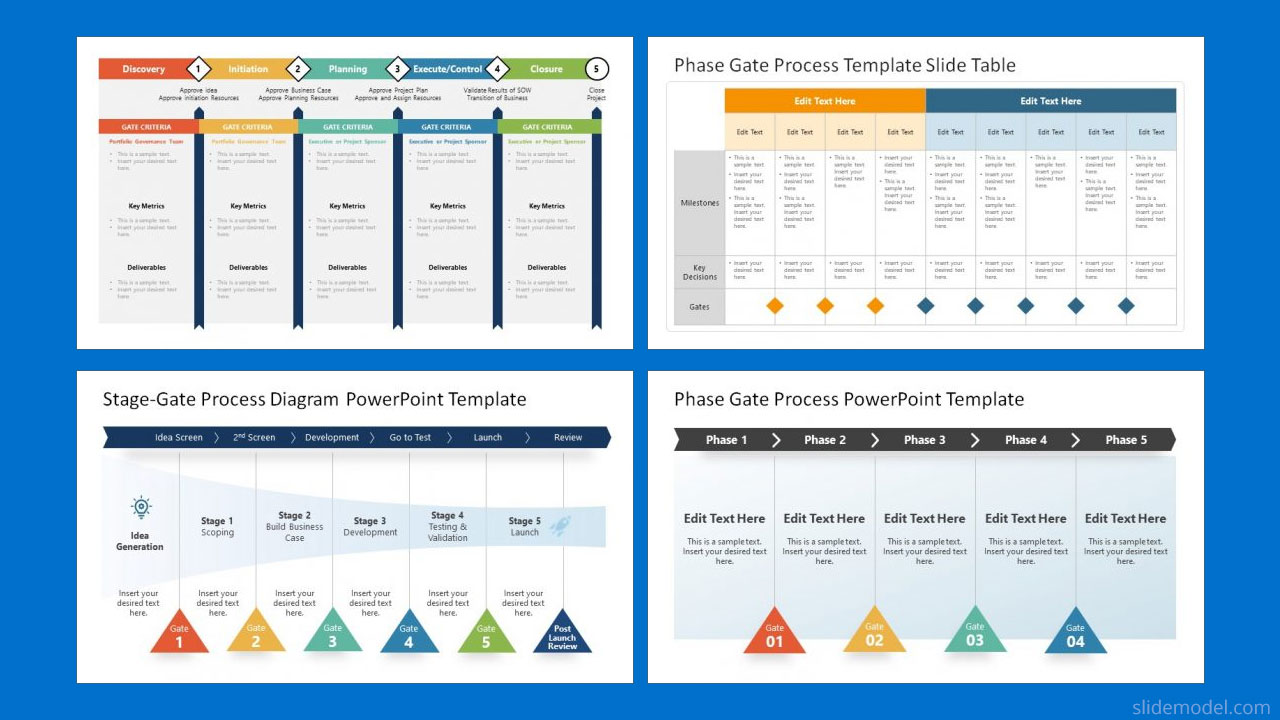
If you want to present the Stage Gate process in a PowerPoint presentation, you can use various design aspects and even ready-made templates in our Stage Gate Process Templates. Using our Stage Gate Process PowerPoint templates, you will generate a presentation allowing you to inform, convince your audience, and develop action on the steps to follow to apply your Stage Gate Method effectively.
Create a Basic Introduction
To start off, you can begin with a basic overview of the project, and the idea that led to the product before you discuss the process itself. This can help answer some basic questions regarding why the initiative is being or was pursued in the first place.
Show The Gates
What is essential when creating a presentation related to using the Phase Gate Process is to show the gates. Instead of focusing on one slide for each gate, you can present all gates in a single slide before the audience. This can be done using a table-like format. The Phase Gate Process PowerPoint Template is one such example, where all gates are laid out in a single slide using a table, with a detailed explanation of each gate within the illustration.
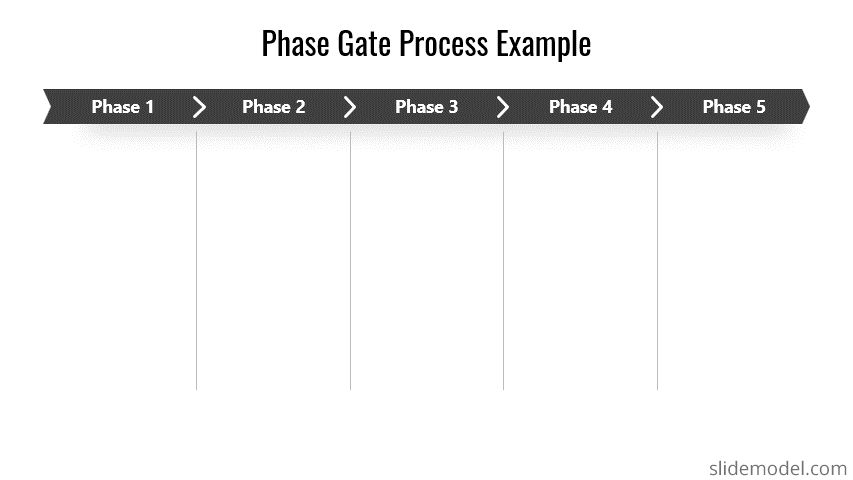
Explain Milestone and Key Decisions
It is also essential to explain the key milestones and decisions. You can also present them along with the gates by using a layout in this template that provides a Phase Gate Process Template Slide Table.
Elaborate the Result of the Gates
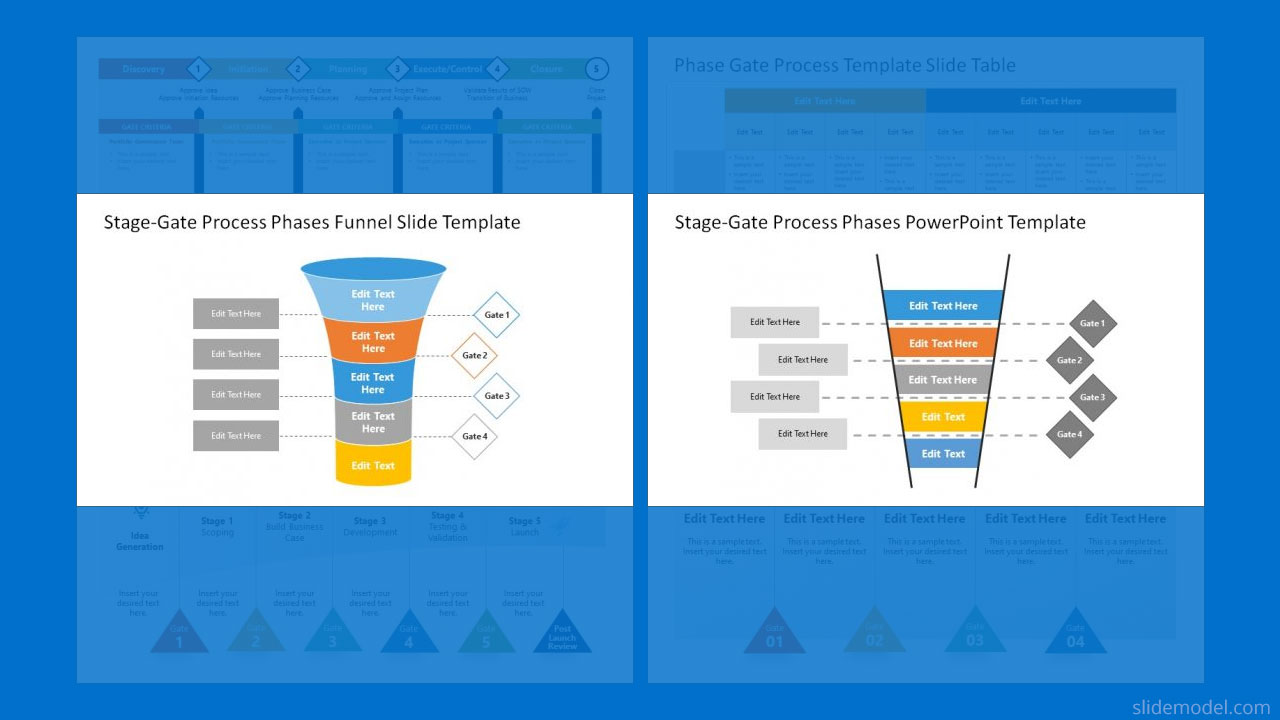
You can elaborate upon the results associated with each gate before discussing the outcome. This can include the initial assessment and, if the product was approved, the later stages, such as the development, testing, validation, and product launch.
Deliberate on the Outcomes
It is also essential to deliberate on the outcome of the Stage-Gate Process. Was the product successfully launched? If so, what was the reaction of customers? Did the product fulfill desired goals? You can also present the entire process in the form of a funnel, using a design like the Stage-Gate Process Phases Funnel Slide Template. This might be particularly suitable for e-commerce or m-commerce products.
If a project was rejected, you could discuss the reasons why it wasn’t feasible to proceed with the product.
Lessons Learned
Regardless of whether the product development proceeded after approval or the product was rejected, there are always lessons to be learned and mistakes that can help mitigate issues in the future. You can conclude your presentation with lessons learned and the way forward.
Case Studies: Successful Implementation of the Stage-Gate Process
Company A: Streamlining New Product Development with Stage-Gate
Company A, a leading technology firm, faced challenges in its product development process due to a lack of structure and clear decision-making criteria. The absence of a standardized approach resulted in delays, inefficient resource allocation, and numerous unsuccessful product launches. To address these issues, the company decided to implement the Stage-Gate Process.
Step 1: Stage and Gate Definition
Company A began by defining clear stages and gates for its product development journey. Each stage was carefully designed to focus on specific aspects, such as ideation, feasibility analysis, development, testing, and launch. The gates were established as decision points to evaluate the progress and viability of the product.
Step 2: Cross-Functional Collaboration
To ensure comprehensive evaluation and input from different perspectives, Company A encouraged cross-functional collaboration. Representatives from marketing, engineering, design, finance, and customer support were involved in each stage, contributing their expertise and insights. This collaboration resulted in a holistic evaluation of each product idea, minimizing blind spots and increasing the chances of success.
Step 3: Data-Driven Decision-Making
Recognizing the importance of data in making informed decisions, Company A incorporated data analytics at various stages of the Stage-Gate Process. Customer feedback, market research, and performance metrics were analyzed to validate assumptions and guide product development. This data-driven approach helped identify potential risks and opportunities early in the process.
Step 4: Streamlining and Optimization
Company A regularly reviewed and optimized its gate review process to eliminate unnecessary bureaucracy and minimize cycle times. Unproductive gates were removed, and the criteria for advancement were refined based on past experiences. The result was a leaner and more efficient product development process.
Step 5: Continuous Learning
Throughout the implementation, Company A fostered a culture of continuous learning. After each product launch, post-project reviews were conducted to identify successes and areas for improvement. Valuable lessons learned from both successful and unsuccessful projects were shared across teams, enabling continuous improvement.
The successful implementation of the Stage-Gate Process led to significant improvements in Company A’s product development outcomes. The structured approach ensured that only the most promising product ideas progressed to development, reducing resource wastage and increasing the overall success rate of product launches.
Company B: Leveraging Customer Feedback to Enhance Stage-Gate
Company B, a consumer goods manufacturer, recognized the importance of customer feedback in shaping successful products. To further improve its Stage-Gate Process, the company decided to incorporate customer insights at various stages of product development.
Step 1: Customer-Centric Ideation
Company B initiated a customer-centric ideation process, gathering feedback from focus groups, surveys, and social media channels. The insights collected directly from potential consumers played a pivotal role in generating product ideas that aligned with market demands and preferences.
Step 2: Customer Validation
At the end of the ideation stage, Company B conducted customer validation tests for the shortlisted product concepts. Early prototypes were shared with target customers to gather usability, design, and functionality feedback. This iterative process ensured that the product’s foundation was solid and aligned with customer expectations.
Step 3: Iterative Development
As the product progressed through the subsequent stages, Company B continued to seek customer feedback and integrate it into the development process. Frequent customer testing and validation cycles allowed the company to make necessary adjustments and enhancements based on real user experiences.
Step 4: Pre-Launch Surveys
Before the final product launch, Company B conducted pre-launch surveys to gauge customer interest and potential demand. These surveys helped predict market reception and provided valuable insights for marketing and distribution strategies.
Step 5: Post-Launch Feedback
Even after the product was launched, Company B actively monitored customer feedback and reviews. This continuous feedback loop enabled the company to promptly identify and address any issues and make improvements for subsequent iterations or new product launches.
By leveraging customer feedback throughout the Stage-Gate Process, Company B experienced a higher rate of successful product launches and increased customer satisfaction. The customer-centric approach resulted in products resonating with consumers, enhancing brand loyalty and competitive advantage in the market. Moreover, incorporating customer feedback into the process facilitated a deeper understanding of consumer needs and preferences, guiding the company’s long-term product development strategy.
Final Conclusions
Many companies are delaying the launch of products due to the COVID-19 pandemic and the subsequent market conditions. This might mean that many products might need to be put on hold for a time when the market is more suitable for their launch. Similarly, the pandemic has also given rise to the need for various products to identify infections, protect consumers, and cater to their work-from-home needs. The Stage-Gate Process can provide a roadmap for passing the product through multiple hoops to ensure that it is worth developing or if the time is right for working on it.
The Stage-Gate Model provides a phased approach towards identifying promising products and ones that might not be feasible to proceed with. If we analyze the number of products launched annually in a market, the number of products that fail might likely be greater than the ones that succeed. Consumer demand, changing market conditions and making the customer pay for a product depend on several factors, including the quality of the product, its distribution, marketing, customer journey, customer experience, etc. While some of these are addressed, the Phase Gate Process cannot account for all variables, especially after the launch of a product. Therefore, it is necessary to deliberate and constantly analyze the changing environment to adjust to market conditions, consumer needs, economic conditions, social change, technology, and other essential variables.
